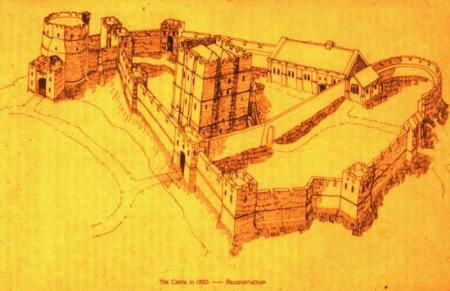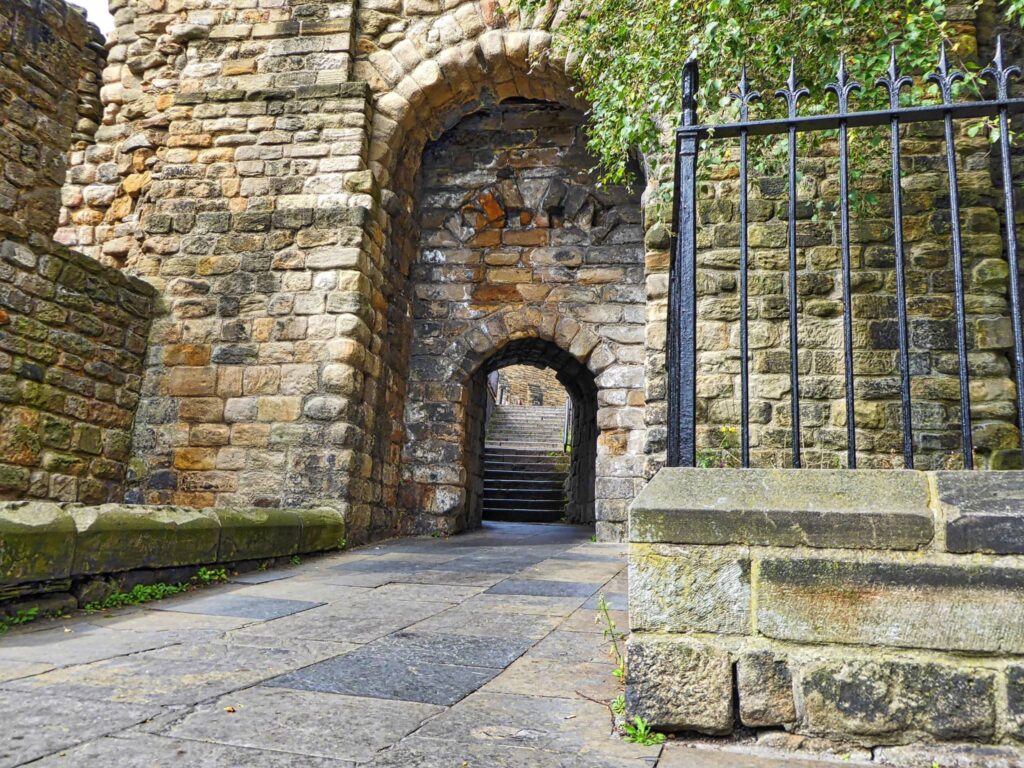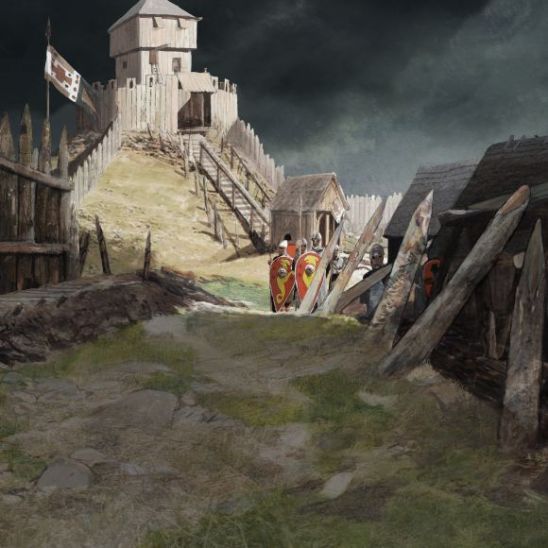In this blog we explore some of the settlement outside of the Castle keep.

There were two main gates to Newcastle’s Castle, the West Gate, the site of which now stands on the Westgate Road in Newcastle, and the Black Gate – much more famous and can still be seen today.
There were two Postern Gates of the castle too, the south Postern, which we’ll talk about here, and the eastern Postern which connects onto a street called Dog Leap Stairs.
Let’s start with the south Postern Gate – the side entrance to the castle. This gate had an earlier gate right next to it, the gatehouse of which can still be seen. It was replaced by a more modern gatehouse which can still be seen. The current gatehouse looks more medieval in design. There are remnants of the walls of the castle here too.
Around the south Postern there are some steps that led down to the quayside in Newcastle, which would have been a really busy place for commerce. The quayside supplied the castle with all the goods it would have required.

Through the Postern, there are some ruins of the walls of the castle and a well. It has been theorised that there was a north and a south Bailey – a distinction between two parts of the castle. That Bailey would have entered into the castle to break up the Garth (or enclosure) to make two parts of that area of the castle.
The Moot Hall
The sandstone building outside Postern would have served as a courthouse. It is still in use as a family court for the city of Newcastle. It was built in 1812 and is one of the most modern buildings on the site of Newcastle’s Castle. When it was built, they demolished previous structures on the site. It would have been quite a rich area and could have been where the Mott and Bailey castle would have been built around 1080.

The castle was built when the murder of a Bishop of Durham over in Gateshead. When that happened, William the Conqueror sent his son, Robert Curthose, up to the north bank of the River Tyne to build him a brand-new castle. They used the contours of the land to build a mound with a wooden tower on the top. That castle survived until the reign of Henry II who wanted to defend his new kingdom. Henry II sent Morris the engineer up to the north to build Newcastle’s Castle from 1167-1177. The Mott and Bailey had burned down before that time. The wooden structure was replaced by the New Castle, which gave the city its name.
The Great Hall
Alongside the new castle, Morris built the Great Hall. Many people think of the Great Hall as the hall inside the castle – this would have been a place of royal power, a judicial space. The actual Great Hall, where today’s Moot Hall stands, would have been a place for feasting and entertainment. The ground level had food and wine storage built into it with kitchens to cater for the festivities. The Great Hall above it would have been used for entertaining with food and wine brought up from the floor below.
The Queen’s Mantle
On the other side, where the Mott and Bailey castle had been, Morris built the Queen’s Mantle. For context, when the Normans were building castles, they had, for a short period of time, a specific design for their castles. It was round with five walls and an open space in the centre. Buildings were built into the walls. Here at Newcastle, there would have been the Queen’s Mantle – a semi-circular building with rooms built into the walls. These rooms would have been used by the industries needed to defend the Castle, such as blacksmiths. This was later upgraded to give a different defensive position – the half moon bastion, which was filled with canons for defence. Newcastle was taken over by the Royalists and Gateshead was home to the Parliamentarians and battles took place between the two.




